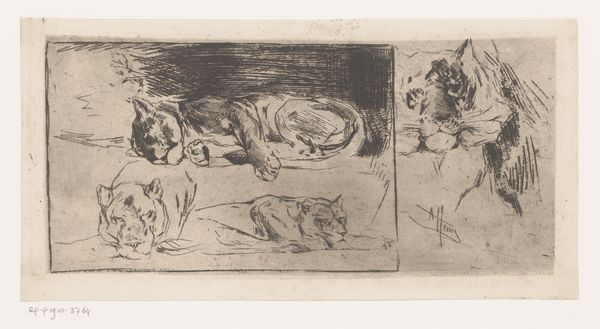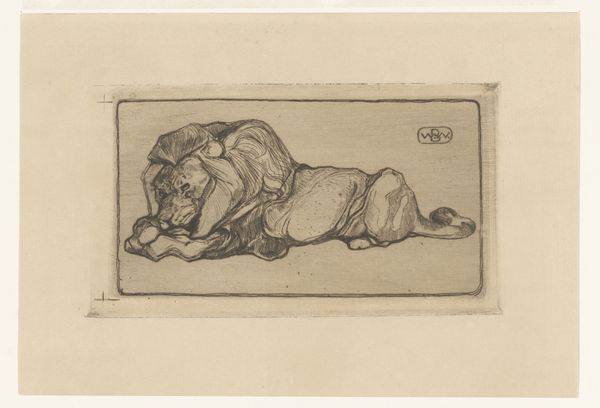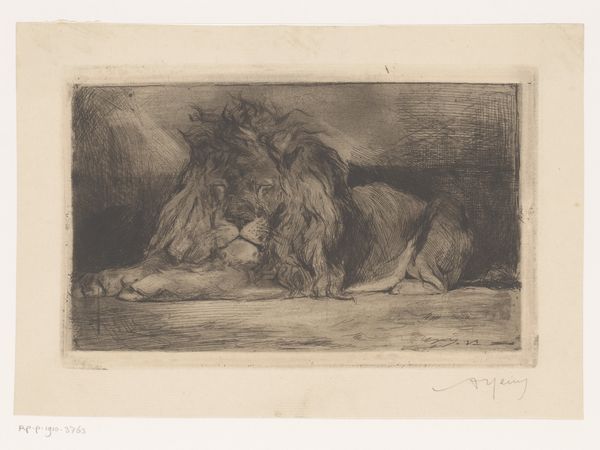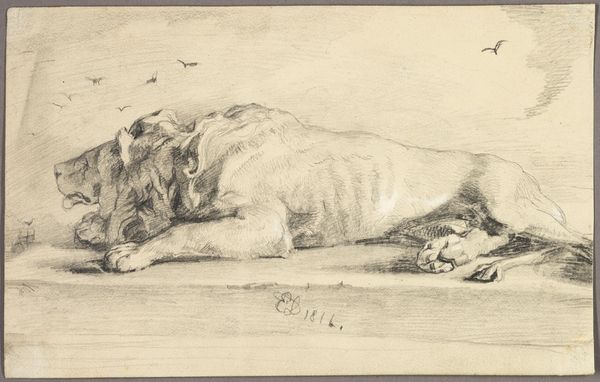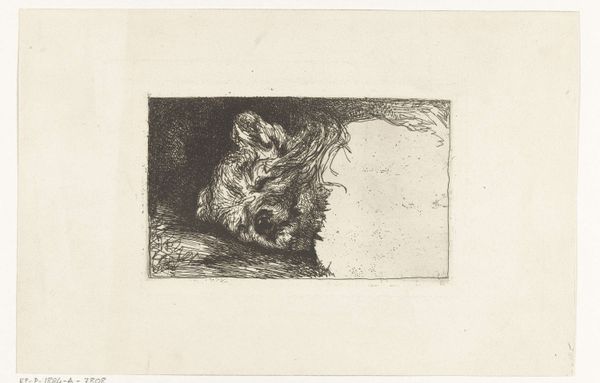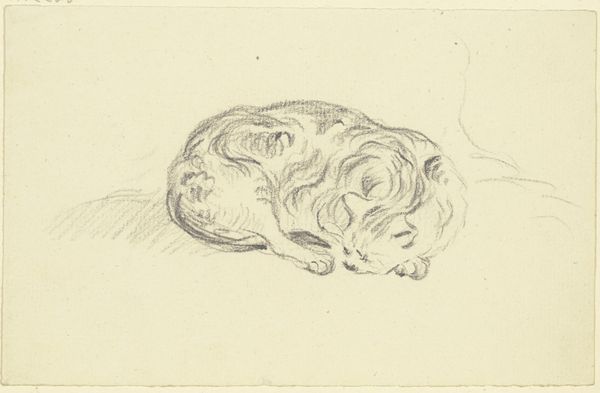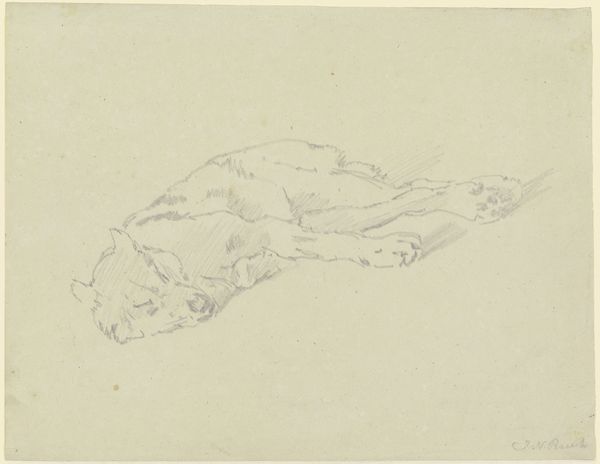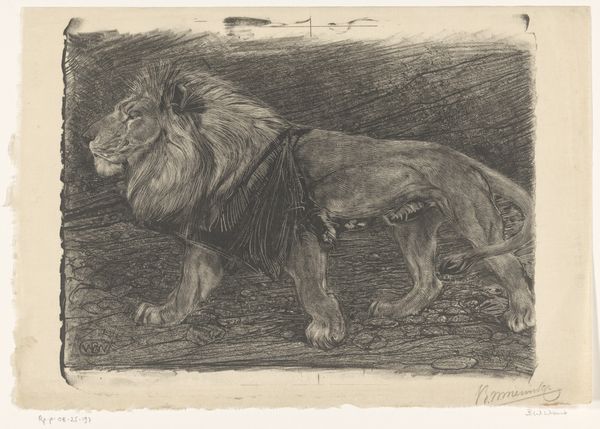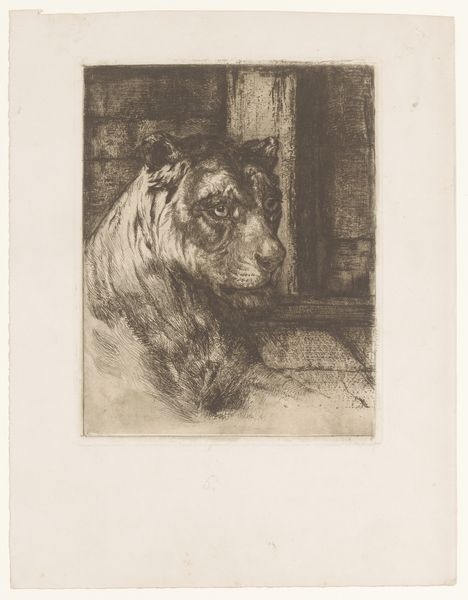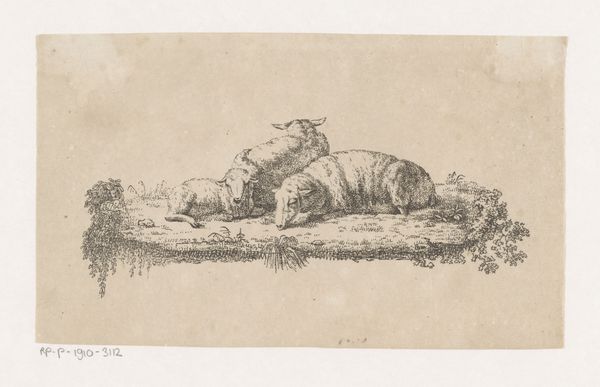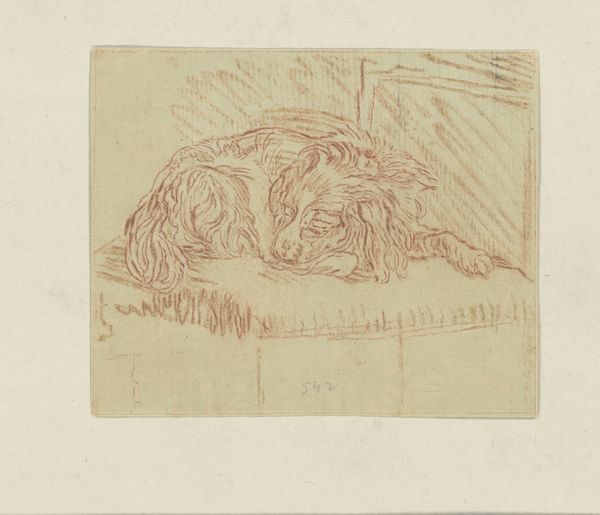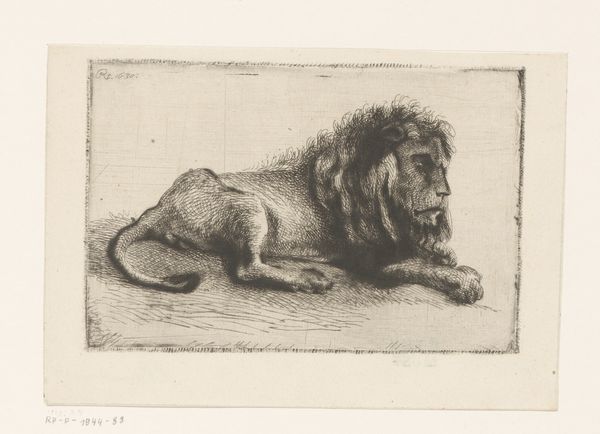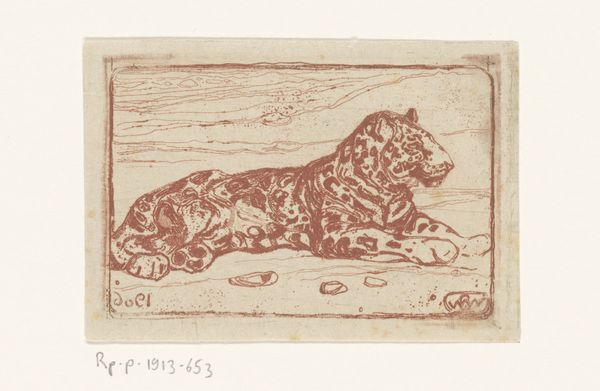
drawing, paper, pencil
#
portrait
#
pencil drawn
#
drawing
#
pencil sketch
#
charcoal drawing
#
figuration
#
paper
#
pencil drawing
#
pencil
#
realism
Dimensions: height 139 mm, width 296 mm
Copyright: Rijks Museum: Open Domain
Editor: This drawing, “Studieblad met tijgers,” which translates to "Study Sheet with Tigers," is by Armand Heins and likely dates between 1866 and 1910. The artist used pencil on paper. It has such a somber mood because of the muted palette. What stands out to you? Curator: The intrigue lies in the structural interplay between the distinct rendering styles. Consider the contrast: the meticulous detail in the larger, resting tiger, achieved through dense cross-hatching and careful tonal gradations, juxtaposed against the almost spectral presence of the tiger heads sketched to its left. Note how the negative space around the sketch allows the eye to complete the form, a conscious choice that prompts us to consider the work not as a mere representation, but as an exploration of form itself. Editor: It is definitely interesting to compare the two renderings of the tigers. Is there something you are observing about the artist through that juxtaposition? Curator: Precisely. Observe the artist’s confident command of line in the resting tiger’s form. Each stroke contributes to the volumetric definition. The sketch, on the other hand, sacrifices this completeness for a study in pure gestural energy. It allows the artist to achieve a sense of immediacy. Do you perceive how the shift in artistic approach affects the meaning and feeling of the piece? Editor: I do. The completed tiger feels solid and heavy, but the sketched tigers on the left are much more free-spirited, even though they are less defined. Is it correct to interpret that juxtaposition as capturing two different sides of one thing? Curator: An insightful observation. The very contrast embodies not merely depiction but rather dissects visual strategies, allowing viewers to consider the different components of mark-making on the feeling of the whole. The artist invites reflection on process as an element of the aesthetic outcome. Editor: I hadn't considered it that way before. Thank you. It's really fascinating to see how focusing on form reveals new depths in the work. Curator: Indeed. By examining the visual structure, we can appreciate not just what the artist has represented, but how the artist's decisions shape our understanding.
Comments
No comments
Be the first to comment and join the conversation on the ultimate creative platform.
